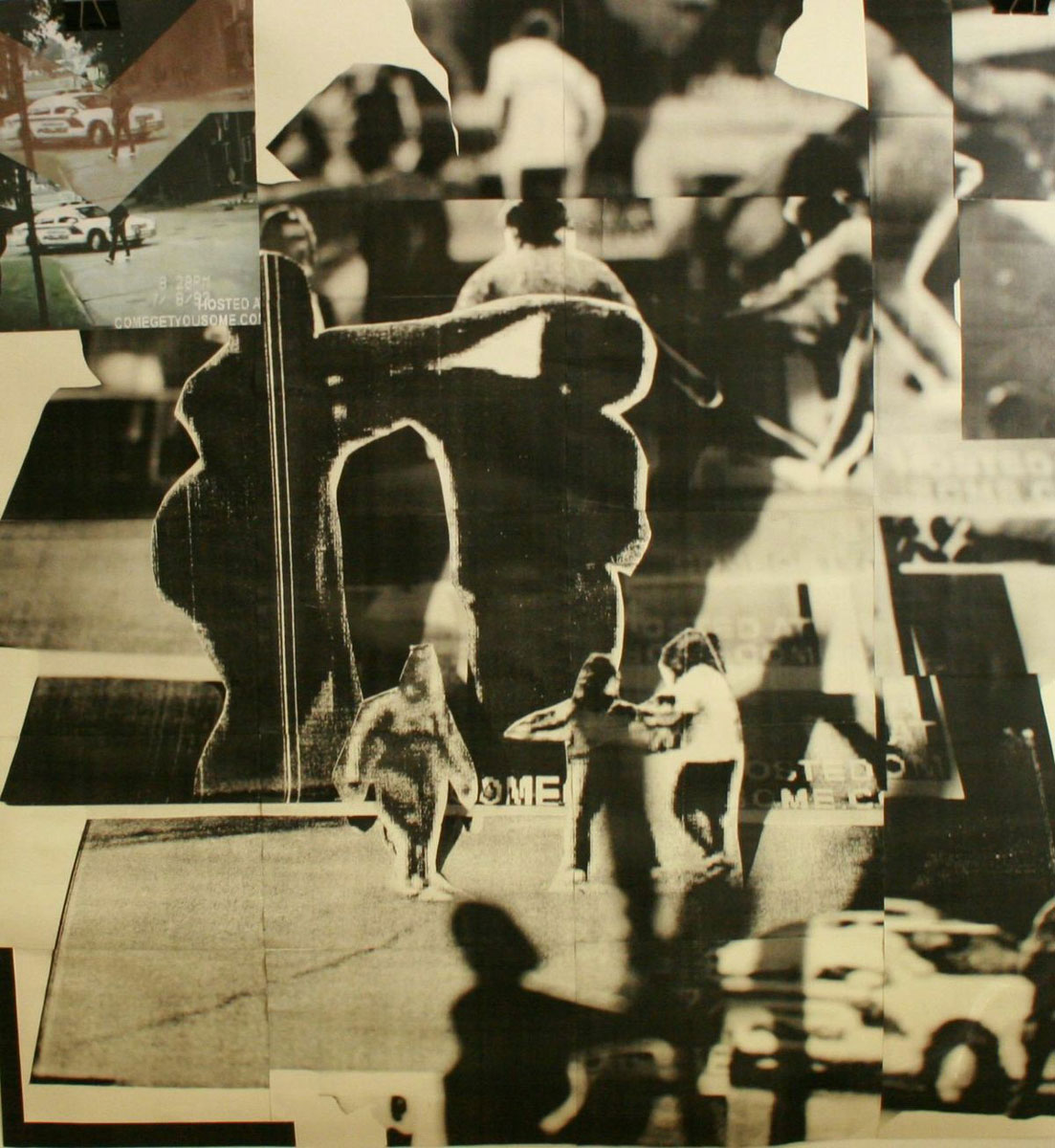
“Weren’t None of Them like This,” (2013). Xerox on paper. 45 x 39 inches. Courtesy the artist and Upon Paper, Berlin.

“Talisman for Protection of Transgendered against the Sexual Fetishist and Fashion World,” (2013). Xerox and transparency paper collage. 28 x 39 inches. Courtesy the artist.

“Balthus Street with Fight,” (2012). Collage on munken cream paper. 39 x 42 inches. Courtesy the artist and OttoZoo Gallery, Milan.
[](#)[](#)
Kandis Williams
The Collage Artist Wades Through Printed Matter
Beauty. Motherhood. Family. Eroticism. Violence. These are the themes that emerge from Berlin-based artist Kandis Williams’ collage work. “You can take pictures from all over, from any time or place and you can mash them up and disintegrate their photographic value into a formal value,” she explains of her imagery. A case in point: her large-scale black and white collages of late, which provide a voyeuristic peep show into human cruelty courtesy World Star Hip Hop video screenshots of public fights.
Williams studied at Cooper Union, where her main focus was figure painting. But not long after finishing, the Baltimore native stepped away from the fabrication process. “I lost the point of making art.”
She became a teacher for a non-profit, where she instructed a range of underserved children in various cities at community centers and shelters, at one point teaching a collaging class for adolescents in a New Orleans prison. “I think of those years as a meditation on what printed matter provides—\[a meditation\] on paper quality, and how different a newspaper article looks from something printed off the Internet.”
She became consumed with the idea of brutality and the depiction of it in her work, and was inspired to start collaging. “Teaching art \[at shelters and community centers\], I would see the whole language of violence, the expression of art making, the art making process, and the choices people made. So when fights would break out in art class, you could really follow the kid’s work through the psychology \[of it\].”
The violent imagery is compiled into collage work that is more symmetrical in placement, rigid. Still, she does not seem to consider this a fixed stylistic preference. “I’m making work right now about love,” she says, observing that the process has been more free form. “I’m less interested in representing multiple perspectives or images around the topic. Now it gets straight to the point…there are a lot of figures now with no background, no foreground, just floating in shape and floating in their own density.”
This contrasting visual language is an important footnote in the evolution of Williams’ work. The depiction of melee, using symmetry and formalism, juxtaposes with her more tender offerings, which tend to be looser in production. She agrees it’s possible that it is not purely coincidence. “That changed really organically. You take on a lot with the topic of violence. I made that work for about a year and a half, two years. And I just got to the point where I thought everything was a fight. It’s totally exhausting. To not have distance, and not have clinicality in a topic like that, takes too much out of you.” She continues, “Also with blood splat—I’m a really big horror movie junkie—blood splatter and bodies falling, things like that, all lend to strong, formal lines, strong shapes. So everything got a little softer the last few months.”
Despite the newly altered tone of her personal work, the artist still draws inspiration from El Lissitzky and Dziga Vertov, formalists of the Russian avant-garde. Their work, she suggests, may also have a strong influence on today’s culture, particularly the recent proliferation of everyday lives being presented to an audience as moving images. “I always saw this weird revelation of Vertov. We actually now have lightweight cameras that we can carry around everywhere. We have all these eyes open.”
And the “everyone’s a photographer” mentality opens up the boundaries on what qualifies as art. With the homogenization of the callous, the mundane, and the marginally precious, is photographic value measured in YouTube likes? For her part, Williams is pretty open-minded.
“I was just watching a channel I found last night of this guy who made, like 596 videos of just taking out ingrown hair. It’s like a microscope view of an ingrown hair. It’s fucked up, it’s so mesmerizing.”
